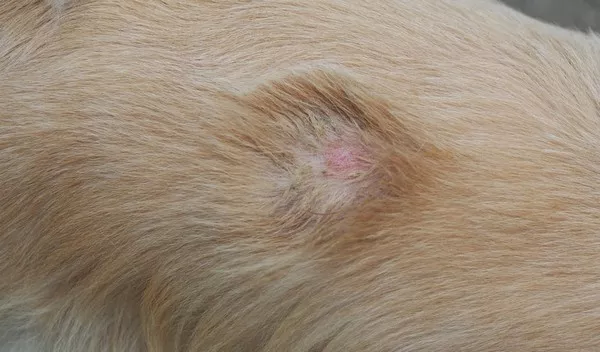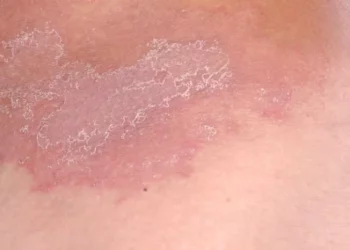Ringworm, despite its name, is not caused by a worm but rather by a group of fungi known as dermatophytes. These fungi can infect the skin, hair, and sometimes nails of both humans and animals, including dogs. The potential for cross-species transmission, particularly between humans and their canine companions, is a topic of concern for pet owners and healthcare professionals alike. This article explores the dynamics of ringworm transmission, the risks involved for both humans and dogs, preventive measures, and treatment options.
Understanding Ringworm
What is Ringworm?
Ringworm is a fungal infection of the skin, characterized by a ring-shaped rash. The most common dermatophyte species responsible for ringworm in humans include Trichophyton, Microsporum, and Epidermophyton. In dogs, Microsporum canis is the most frequent culprit, though other species like Trichophyton mentagrophytes can also be involved.
How is Ringworm Transmitted?
- Human to Human: Direct skin-to-skin contact with an infected person.
- Animal to Human: Contact with infected pets, especially through touching or grooming.
- Environment: Fungal spores shed by infected individuals or animals can persist in the environment, contributing to transmission.
Can Humans Transmit Ringworm to Dogs?
Ringworm transmission between humans and dogs is possible, but the likelihood and ease of transmission depend on several factors:
- Susceptibility of Dogs: Dogs can contract ringworm from humans, but they are less susceptible compared to cats. Factors influencing susceptibility include the dog’s immune system, age, health status, and breed.
Mode of Transmission:
- Direct Contact: Skin-to-skin contact between an infected human and a dog.
- Indirect Transmission: Fungal spores shed onto surfaces, clothing, or bedding can potentially infect dogs upon contact.
- Symptoms in Dogs: Infected dogs may develop circular patches of hair loss, often with a scaly or crusty appearance. The affected areas may be itchy or inflamed.
Risk Factors:
- Close Contact: Living in close quarters with an infected person increases the risk.
- Immunocompromised Individuals: Dogs with weakened immune systems are more susceptible.
- Poor Hygiene Practices: Lack of proper hygiene can contribute to increased fungal transmission.
SEE ALSO: How Can My Dog Get Ringworm?
Preventive Measures
Preventing ringworm transmission involves several key strategies for both humans and dogs:
1. Hygiene Practices:
- Regular Handwashing: Especially after handling animals or potentially contaminated items.
- Cleaning and Disinfection: Regularly clean and disinfect surfaces and pet bedding.
- Isolation: Keep infected pets isolated until cleared by a veterinarian to prevent spreading the infection.
2. Routine Veterinary Care:
- Screening: Include dermatophyte screening as part of routine veterinary exams, especially for rescue animals or those with unknown histories.
- Vaccination: Although no specific ringworm vaccine exists, maintaining overall health through vaccination and proper nutrition can support the immune system.
3. Education and Awareness:
- Recognizing Symptoms: Educate yourself about the signs of ringworm in both humans and dogs.
- Prompt Treatment: Seek veterinary and medical attention promptly if symptoms occur to prevent spread.
Treatment Options
Treatment for ringworm in dogs typically involves a combination of topical therapy and systemic medications:
1. Topical Antifungals:
- Shampoos and Creams: Applied directly to affected areas to kill fungal spores and promote healing.
- Lime Sulfur Dips: Effective in treating ringworm infections in dogs, though they have a strong odor and can stain.
2. Systemic Medications:
- Oral Antifungals: Prescribed by veterinarians for more severe or widespread infections.
- Duration: Treatment may span several weeks to ensure complete eradication of the fungus.
3. Environmental Decontamination:
- Cleaning: Thoroughly clean and disinfect the pet’s living environment to eliminate fungal spores.
- Quarantine: Restrict access to areas where the infected pet has been until decontamination is complete.
Conclusion
While the transmission of ringworm between humans and dogs is possible, it can be prevented through diligent hygiene practices, routine veterinary care, and prompt treatment. Awareness of the signs and symptoms of ringworm in both species is crucial for early detection and intervention. By taking proactive measures, pet owners can minimize the risk of infection for themselves and their beloved canine companions, ensuring a healthy and happy relationship between humans and dogs.
Understanding the dynamics of ringworm transmission underscores the importance of collaboration between healthcare professionals and veterinarians in managing this common fungal infection effectively. By working together, we can mitigate the spread of ringworm and promote the well-being of both humans and their pets in our communities.
Related Topics:

























